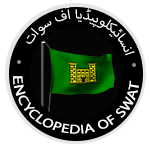
Communications are problematical, especially in Indus Kohistan. Most transport is by foot, though a recently constructed path, carrying the traveller on changing galleries) along the foaming Indus, is passable by donkey or mule caravan up to Seo. Where the main river is not followed, or in travelling between Indus and Swat Kohistan, the critical passes range between 14 000 and 16 000 ft. in altitude, and are never free of snow. Swat Kohistan may be reached and traversed more easily, either along the jeep road constructed by the Wali from the end of the motor road at Bahrein and nearly to Kalam, or across the low pass (ca. 11 000 ft.) connecting Kalam with the northern areas of Dir state. A very high pass, supposedly some 17 000 ft., connects Swat Kohistan with Chitral State to the North. It appears rarely to have been used…In the survey of the above areas, I attempted to maximize mobility at the expense of comfort, and was able, thanks to the assistance given me by the State authorities, in this way to cover considerable territory. One may reach Karorra on the Ghorband-Kana valley junction by local bus from Saidu in the course of some hours. From there I followed the Ghorband stream down to the Indus at Bisham, in Pashto-speaking territory. My route from there followed the Indus and later the Duber stream to Duber Fort, all within the W.dialect group of Kohistani. From Duber, a footpath leads over a low pass to a series of small valleys, together forming the Jijal and Patan communities of speakers of the E. dialect of Kohistani. Rather than continue through the lower settlements along the Indus, which in the summer are nearly abandoned, I then followed the main Patan valley up into the heart of the Indus Kohistan mountains through the succession of seasonal settlements to the highest mountain pastures, and on over the Tial (also called Munro) pass, at between 15 000 and 16 000 ft. altitude. This divide forms the border between the E. and W. dialect areas; crossing it and descending towards the Kandia valley bottom, I followed this moderately large tributary of the Indus upwards through a major part of its extent, to Gabrial. A side valley just below Gabrial leads up to the Matiltan pass, reaching some 15 000 ft. altitude, which constitutes the easiest route between the Kandia and Swat valleys. The divide corresponds to the border between Kohistani and Gawri territory. The Matiltan valley descends to the Gawri settlements of Matiltan and Ushu. Taking this route, I continued down the main valley to its point of juncture with Gabral river at Kalam, the central Gawri settlement. After visiting Utror, on the western tributary, I continued along the Swat river, through the Gujar communities Laikot and Peshmal, through the section of the valley belonging to the Torwalis, finally reaching Bahrein, the southernmost Torwali village, and the northernmost point which is reached by motor communications.
As much of this route was impassable for donkeys, coolies were required for all transport. This area being deficient in food, supplies, (rice, flour, sugar, tea) for the group were carried. Coolies were changed between each district I passed through, and their number was reduced as the supplies were consumed – from four at the start to one on arrival in Bahrein. The administration kindly furnished us with an armed guard; of equipment, short of food, weapons, and purely personal effects, warm bedding as protection against the very low night temperatures was the only necessity.
The, in part, rather forced marches of the schedule would not have been possible to maintain in continuous travel. The days spent in communities at interviewing served, however, as rest periods, and enabled us to travel more swiftly when on march. Thanks to the friendliness of both Pathans and Kohistanis when one meets them on the road as fellow travellers, even the days of travel were not lost to anthropology. Some of my most useful assistance in grasping Kohistani political and social institutions was given by fellow travellers, coolies, and guards during the strenuous hours of companionship on a narrow or non-existant foot-path.
Reference (Source of Information):
Fredrik Barth, Indus and Swat Kohistan, An Anthropological Survey, STUDIES, HONOURING THE CENTENNIAL OF UNIVERSITETETS, ETNOGRAFISKE MUSEUM, OLSO, 1857-1957, VOLUME II, 12-14.









Comment here